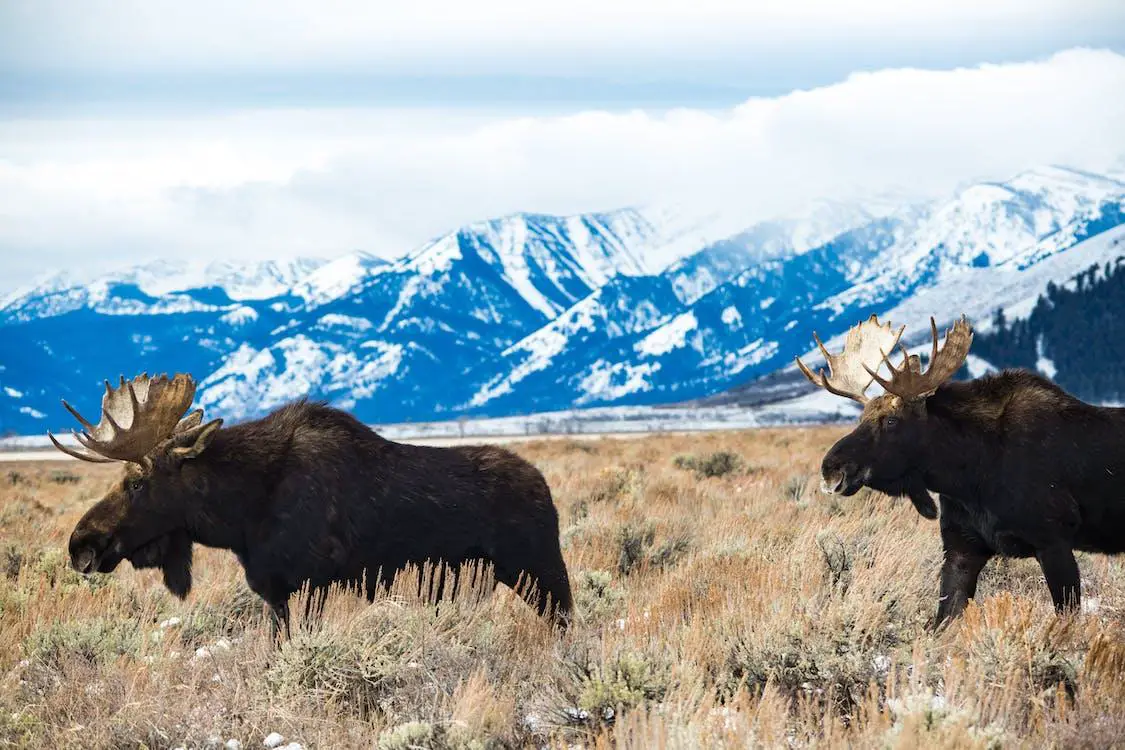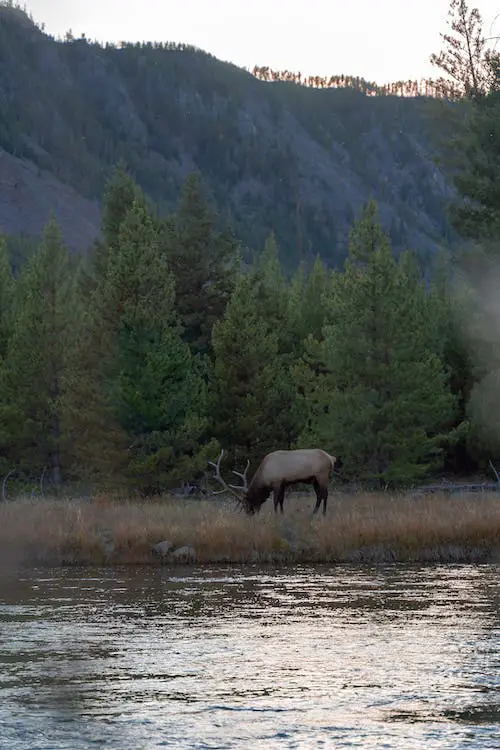This post was last updated on February 19th, 2023 at 04:41 pm
A Guide to Fly Fishing in the Tetons of Wyoming
Having been a fly fishing guide here for seven years, I have spent a tremendous amount of time on the river.
Fly fishing for trout in the Grand Teton area is a dream come true for any angler. This beautiful area in the state of Wyoming is home to some of the best trout fishing in the world, and it’s not hard to see why. With stunning scenery and crystal-clear streams, there are plenty of opportunities to catch rainbow, brown, and cutthroat trout.
I was born in Michigan and before I came to the Teton valley in Idaho, I never knew just how good fly fishing for trout with large dry flies could be.
I first started Fly fishing when I was around 4 years of age, and spent most free time growing up doing it as much as possible. After years of putting it off I finally decided to move out west on 2003 to work in Yellowstone National park. When I started there I was hired as a room attendant.
I shortly moved up the ranks and was hired as a linen truck driver. Driving around the linen truck I got to see a lot of the park and it allowed me opportunities to seek out the hidden holes in the national park. On every day off I traveled and fished as much as possible. By the fall of my first season in the area I had found the south fork of the snake and Henry’s fork. I had read about them in all the fishing magazines for years, but it was great to finally see them for myself.
I went back to Michigan that fall and dreamed about coming back. Shortly after I was hired as a guide in Idaho, fishing on the very same rivers I had read about my entire life. The most trout infested waters anywhere in the world.

The South fork of the Snake river
The south fork is a tailwater river that flows out of palisades reservoir in southeast Idaho. It is fed by the upper snake after it flows through Jackson hole (in the Teton area) and out of its headwaters area in Yellowstone National Park.
Here are some facts about the south fork of the snake river provided by the Bureau of Land Management.
When you first step into the boat in the morning it is generally a little cool out. Once it starts warming up, and the water temperature rises the insects often begin to hatch. These insects are not the biting kind, they are the kind the fish want to eat. They are composed of Stoneflies, mayflies, and caddis.
The fish really enjoy eating these insects and a prolific hatch of them can often encourage large quantities of fish to begin feeding. Floating down the south fork any time of year is a spectacular sight. Starting at palisades dam all the way down to lower stretches of the river near Rexburg.
This river is known for its difficult fishing conditions, but the rewards are well worth the effort. With plenty of rainbow and cutthroat trout to be caught, this is a great spot for experienced anglers looking for a challenge.
The Henry’s fork of the Snake
The Henry’s fork is a great fishery that has a lot of every type of fishing available. There are fast stretches littered with boulders, and slow stretches of water that you can barely even tell it is flowing. The slow sections tend to be more difficult for the Beginner angler. The calm water makes it easy for the fish to critique your flies entry into the water and also examine your drift.
The lower sections of the river around Ashton are often really great for fishing in the early part of the year. Once the water begins to warm around early summer the fishing tends to slow down a bit. But rest assured there are plenty of stretches to catch trout every day of the year.
The Gros Ventre River
Another great spot to try your hand at fly fishing for trout is the Gros Ventre River. This river is a bit more remote than the Snake River, but it’s well worth the effort to get there. The Gros Ventre River is home to a healthy population of cutthroat trout, and the scenery along the river is simply stunning.
The Gros Ventre River in Wyoming is home to several species of fish, including the native cutthroat trout, as well as non-native rainbow and brown trout. In recent years, efforts have been made to restore and protect the cutthroat trout population in the river, which is a native species that was historically abundant in the area.
Rainbow trout are another popular species in the Gros Ventre River, and they can be found in both the main river and some of its tributaries. Rainbow trout are known for their acrobatic jumps when hooked, and they can be a lot of fun to catch.
Brown trout are also present in the Gros Ventre River, although they are less common than cutthroat and rainbow trout. Brown trout are known for their elusive nature and can be difficult to catch, but they are a prized catch for many anglers due to their large size and challenging behavior.
Overall, the Gros Ventre River is a great place to go fishing for a variety of trout species, and it’s a beautiful area to spend a day on the water.
The Teton river
The Teton rivers headwaters in Teton valley Idaho start out slow (similar to parts of the Henry’s fork) with a large number of fish. The small (size 18-24) dry fly fishing in this area is tremendous. Like clockwork, almost every evening the insects begin to hatch and the large trout begin feeding.
These trout are a great challenge to catch. They have the advantage in this section of river because they can see so far in the crystal clear, slow moving water.
The Teton River in Wyoming is home to several species of game fish, including rainbow trout, brown trout, cutthroat trout, and mountain whitefish. Each of these species offers a unique fishing experience and can be targeted using a variety of techniques.
Rainbow trout are a popular game fish in the Teton River and can be found throughout the river’s entire length. This species is known for their acrobatic jumps when hooked, and they can provide a thrilling fight on a fly rod or other fishing gear.
Brown trout are another common game fish in the Teton River. These fish are known for their elusive nature and can be difficult to catch, but they can also grow to be quite large. Brown trout in the Teton River can be caught using a variety of techniques, including fly fishing and spin casting.
Cutthroat trout are a native species to the Teton River and can be found in many of the river’s tributaries. These fish are easily identifiable by the red or orange slashes under their jaws, and they offer a unique fishing experience. Cutthroat trout are typically smaller than rainbow or brown trout, but they can still provide a great fight on a fly rod.
Mountain whitefish are also present in the Teton River and can be caught using a variety of techniques. These fish are typically found in deeper pools and can be caught using nymphs, streamers, or small spinners.
Overall, the Teton River in Wyoming offers a great fishing experience for anglers of all skill levels, with a variety of game fish to target using a variety of techniques.

